| DC67224 |
3D-Monophosphoryl Lipid (14)
Featured
|
3D-Monophosphoryl Lipid (14) (3D-MPL (14)) is a biochemical reagent. |
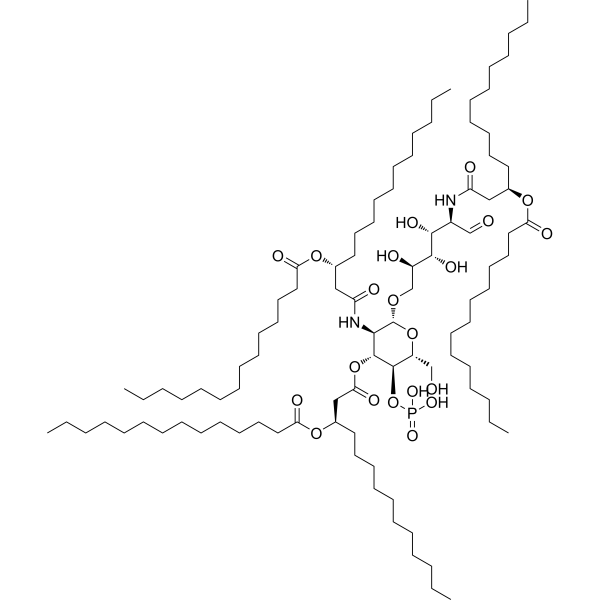
|
| DC67225 |
3D-MPL(12;16)
Featured
|
3D-Monophosphoryl Lipid (12,16) (3D-MPL (12,16)) free acid is a TLR agonist that can be used as a vaccine adjuvant to enhance the immunogenicity of vaccines[1]. |
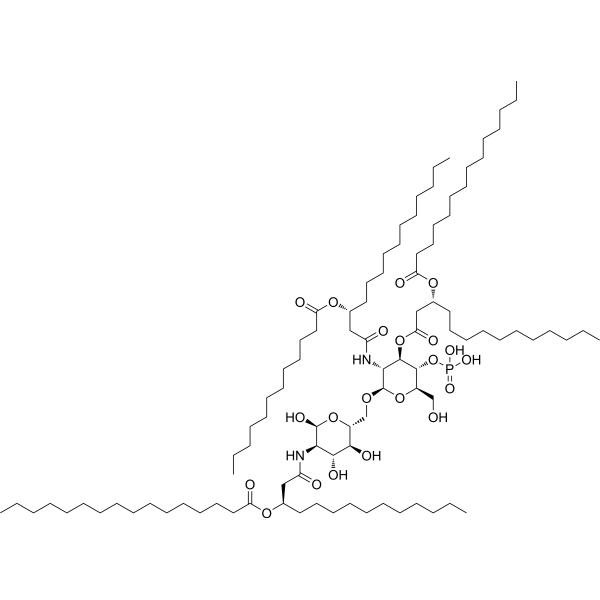
|
| DC67226 |
3D-MPLA
Featured
|
3D-Monophosphoryl Lipid A-5 (3D-MPLA-5) is a TLR agonist that can be used as an adjuvant for vaccines to enhance their immunogenicity. |
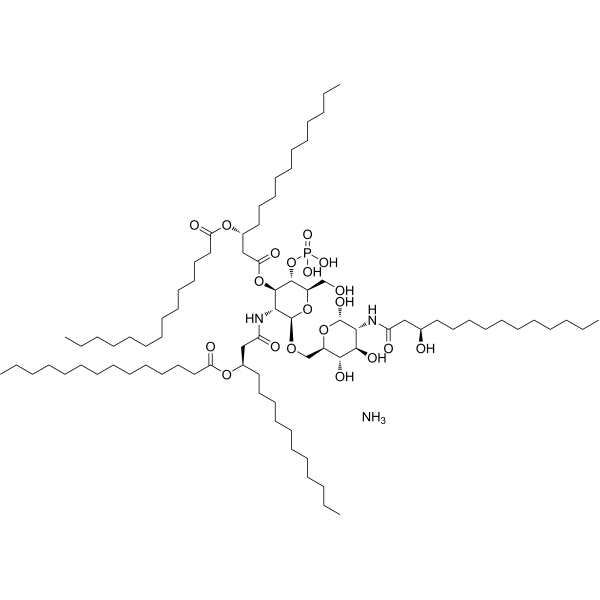
|
| DC67227 |
UM-3006
Featured
|
UM-3006 is a highly efficient TLR7/8 agonist that enhances immune responses by activating the TLR signaling pathway. UM-3006 holds significant research and application potential in the fields of vaccine adjuvants and immune diseases. |
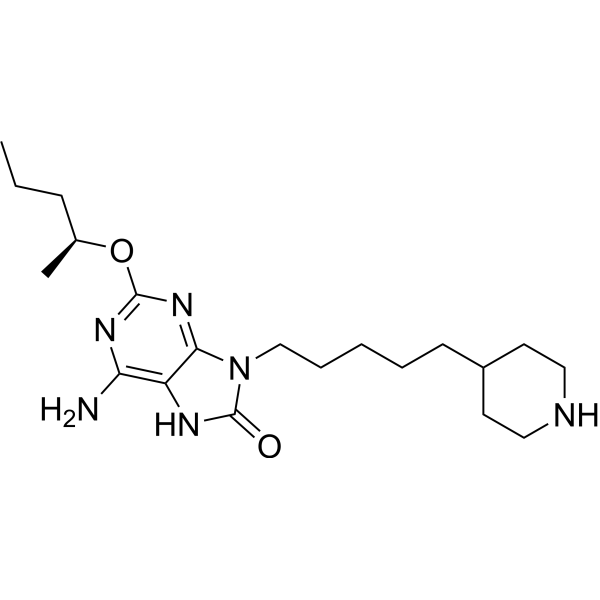
|
| DC67228 |
DSPE-PEG-Folate
Featured
|
DSPE-PEG-Folate is a PEG derivative containing folic acid. DSPE-PEG-Folate has a targeting effect and bind to folate receptors in cancer cells. DSPE-PEG-Folate form micelles/lipid bilayer and can be used to targeted drug delivery system research. |
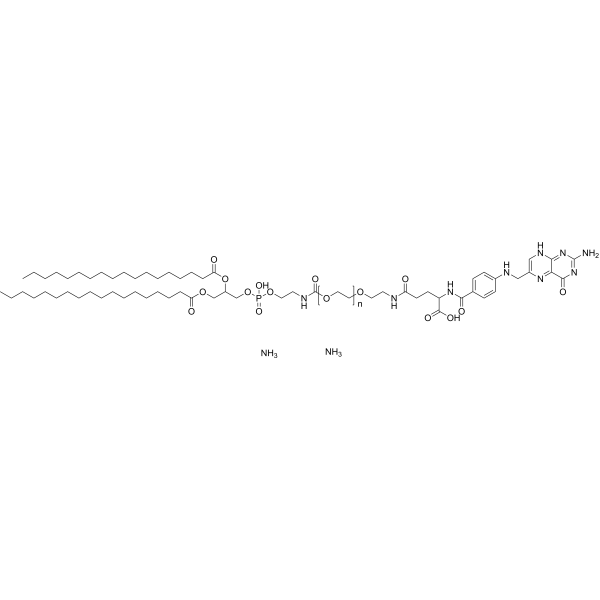
|
| DC67229 |
DSPE-PEG-Mannose
Featured
|
DSPE-PEG-Mannose,1,2-distearoyl-sn-glycero-3-phosphoethanolamine-N-(polyethyleneglycol)-Mannose (sodium salt)is white solid for drug delivery systems, It is an active target material, Itcan be used as an antitumor drug carrier and active targeted delivery |
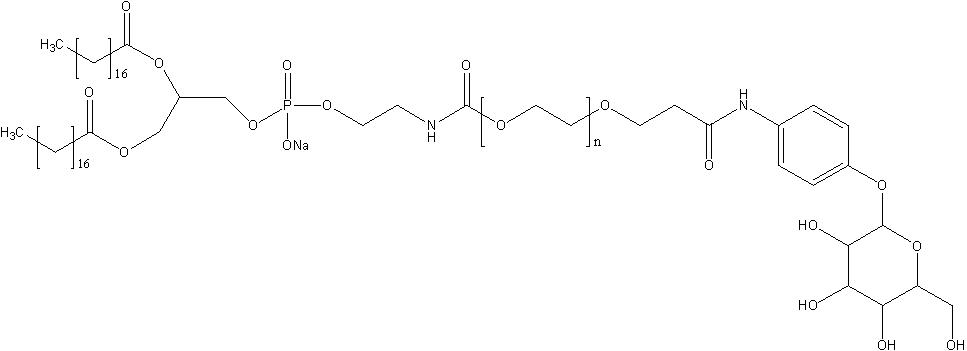
|
| DC67230 |
AYK005
Featured
|
AYK005 is a TLR7/8 immunologic adjuvant. |
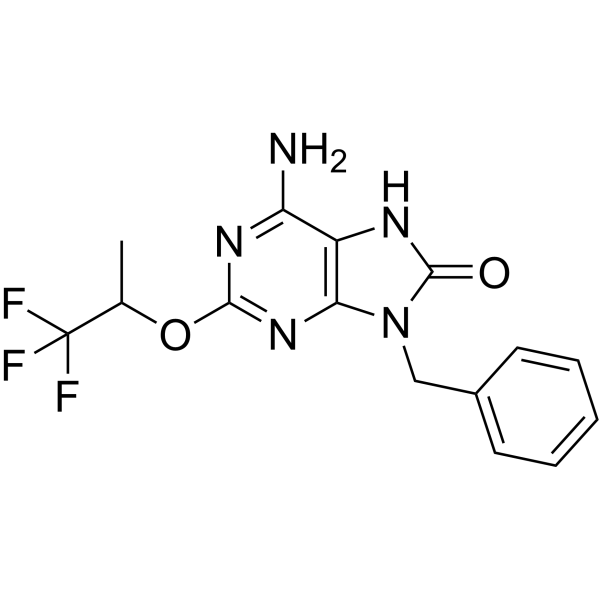
|
| DC67231 |
AYK004
Featured
|
AYK004 is a TLR7/8 agonist that enhances immune responses by activating the TLR signaling pathway. AYK004 is an adenine derivative with a favorable hydrophilic-lipophilic balance, which improves the loading capacity and stability in immunoadjuvant systems such as liposomes, while reducing the side effects of the immunoadjuvant system in systemic immunity . |
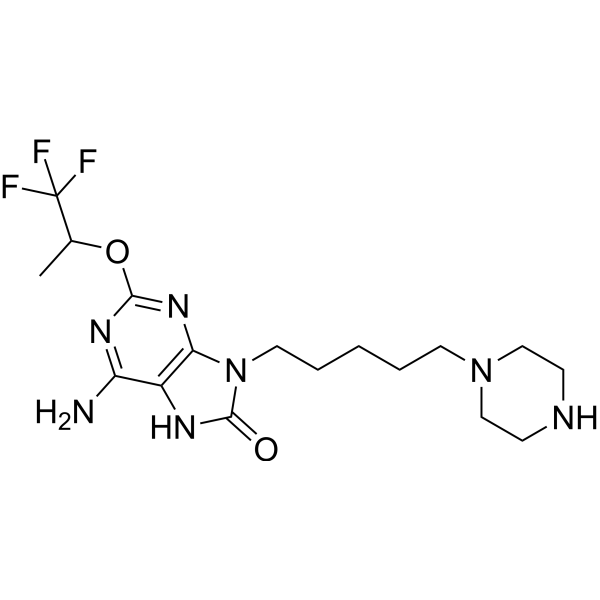
|
| DC67232 |
AYK004-B1
Featured
|
AYK004-B1 is a TLR7 agonist (EC50=0.2265 nM). AYK004-B1 can be used to prepare immune adjuvants. |
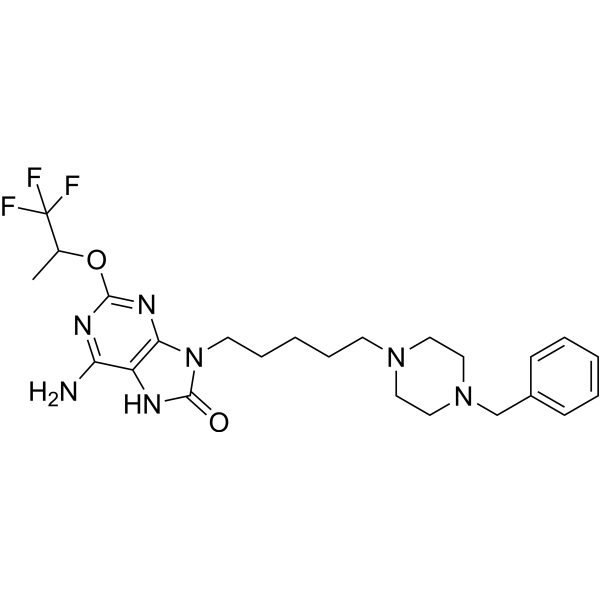
|
| DC67233 |
AYK004-C1
Featured
|
AYK004-C1 is a TLR agonist. AYK004-C1 can be used to prepare immune adjuvants. |
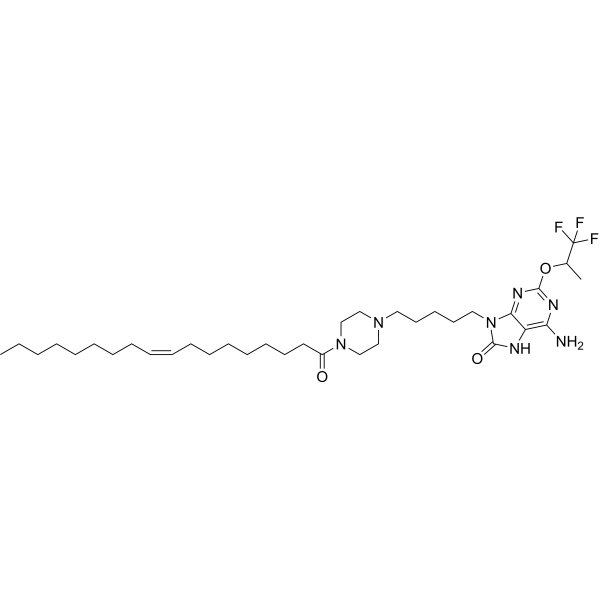
|
| DC67234 |
CPG-1018
Featured
|
|

|
| DC67235 |
CPG 7909
Featured
|
|

|
| DC67236 |
QS-7
Featured
|
QS 7 (QS 7 Api) is a saponin compound that can be extracted from the Quillaja saponaria tree. QS 7 activates immune cells, enhances their antigen presentation ability and cytokine secretion. QS 7 can be used as vaccine adjuvant for immunostimulating, anti-tumor, and anti-infectious activities. |
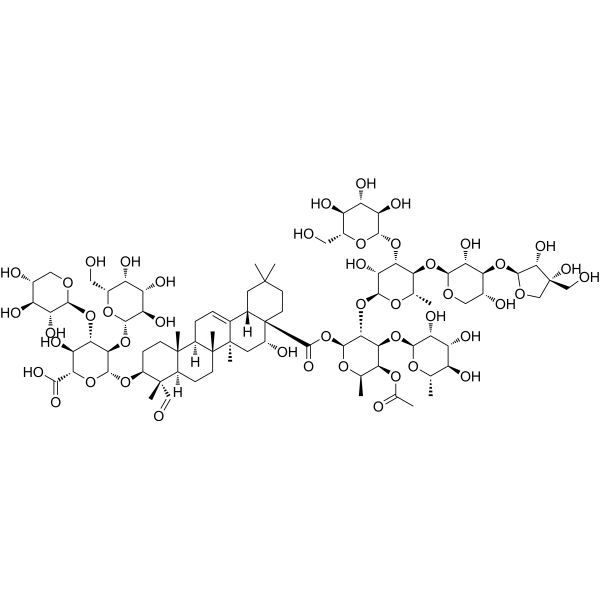
|
| DC67237 |
TQL-1055
Featured
|
TQL-1055 is a semi-synthetic analog of the saponin adjuvant QS-21 (HY-101092) and can be used as a prophylactic vaccine adjuvant. TQL-1055 exhibits robust adjuvant activity for influenza antigens. TQL-1055 combined with the acellular pertussis vaccine (aP) shows good tolerance and enhances the antibody response to pertussis toxin (PT) in mice and rabbits. TQL-1055 is promising for research of chronic hepatitis B. |
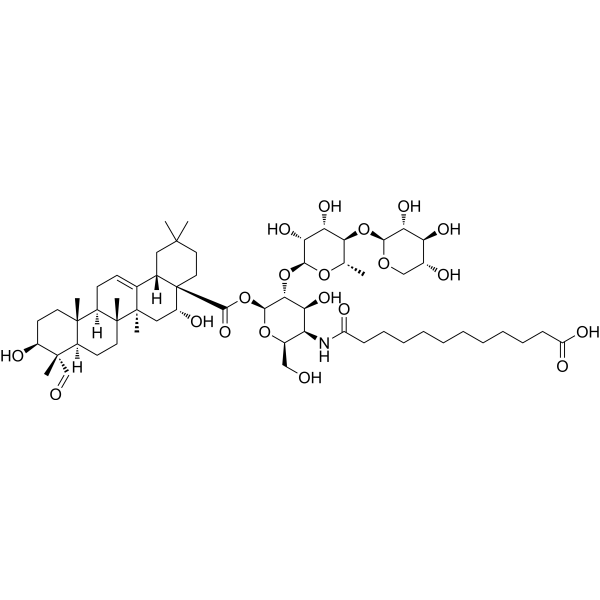
|
| DC67238 |
KRN-7000(C34)
Featured
|
|

|
| DC67239 |
KRN-7000(S34)
Featured
|
|
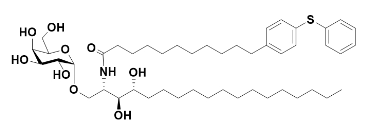
|
| DC67240 |
KRN-7000(7DW8-5)
Featured
|
|
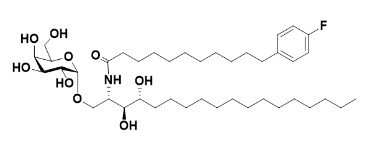
|
| DC67274 |
Cp2-S04
Featured
|
Cp2-SO4 is a phenylalanine derivative that acts as an inhibitor of interleukin-4-induced-1 (IL4I1), an enzyme implicated in immune regulation and tumor immune evasion. IL4I1 is an L-amino acid oxidase that promotes an immunosuppressive microenvironment by producing metabolites like H2O2 and kynurenine, which inhibit T-cell proliferation and function. Cp2-SO4 reverses IL4I1-dependent suppression of T-cell proliferation, making it a promising candidate for cancer immunotherapy and immune-related diseases. Its Ki value of 21.2 µM indicates its potency in blocking IL4I1 activity. |
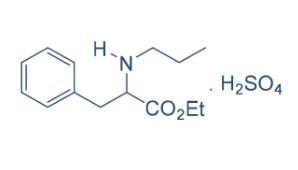
|
| DC74649 |
NOTA-TATE
Featured
|
|
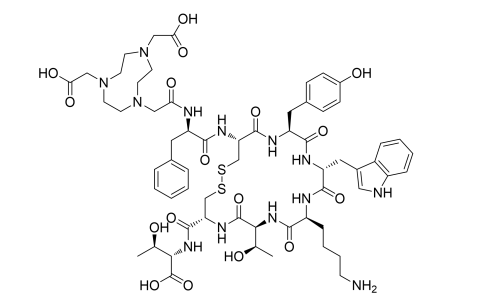
|
| DC75202 |
Fosaprepitant free acid
Featured
|
Fosaprepitant, also known as MK0517, is an antiemetic drug, administered intravenously. It is a prodrug of aprepitant. Fosaprepitant was developed by Merck & Co. and was approved. It is a prodrug of Aprepitant. It aids in the prevention of acute and delayed nausea and vomiting associated with chemotherapy treatment. Fosaprepitant is a weak inhibitor of CYP3A4, and aprepitant, the active moiety, is a substrate, inhibitor, and inducer of CYP3A4 |
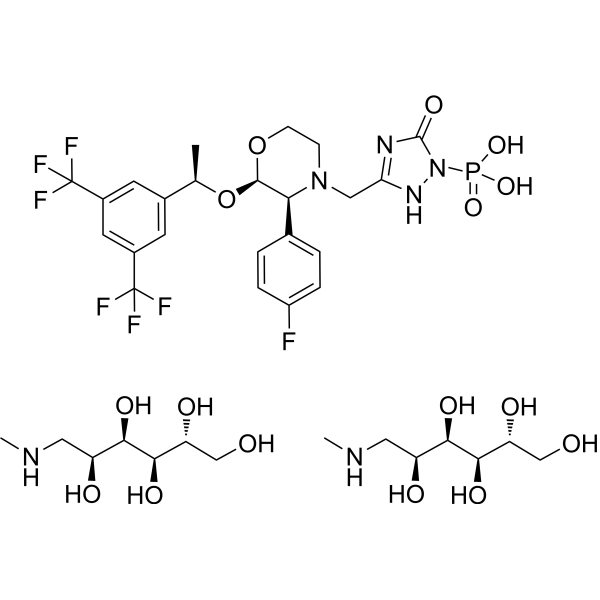
|
| DC60778 |
TH6342
Featured
|
TH6342 is a SAMHD1 inhibitor with IC50 of 9.1 μM/11.0 μM/5.8 μM against dGTP/Cl-F-ara-ATP/ara-CTP, respectively. TH6342 engages pre-tetrameric SAMHD1 and deter oligomerization and allosteric activation without occupying nucleotide-binding pockets. |
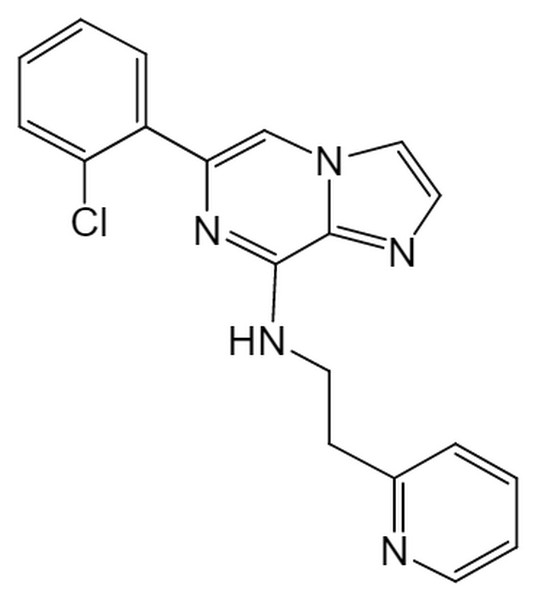
|
| DC60779 |
TH7127
Featured
|
TH7127 is a SAMHD1 inhibitor with IC50 of 4.9 μM/4.5 μM/4.0 μM against dGTP/Cl-F-ara-ATP/ara-CTP, respectively. |
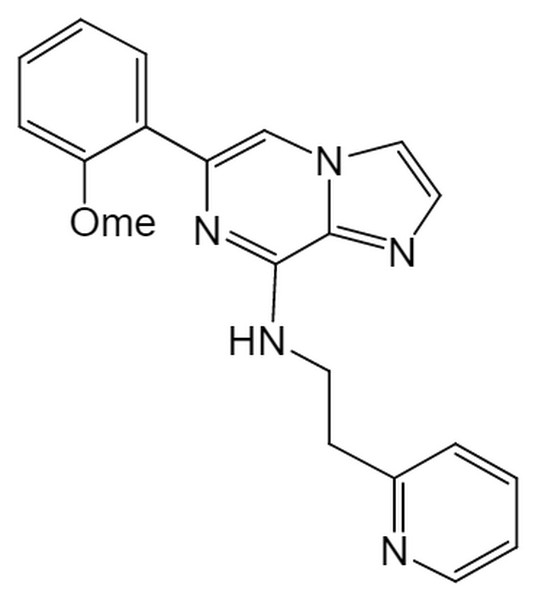
|
| DC60780 |
TH7126
Featured
|
TH7126 is an inactive control of TH6342. TH7126 does not disrupt SAMHD1 dimerization. |
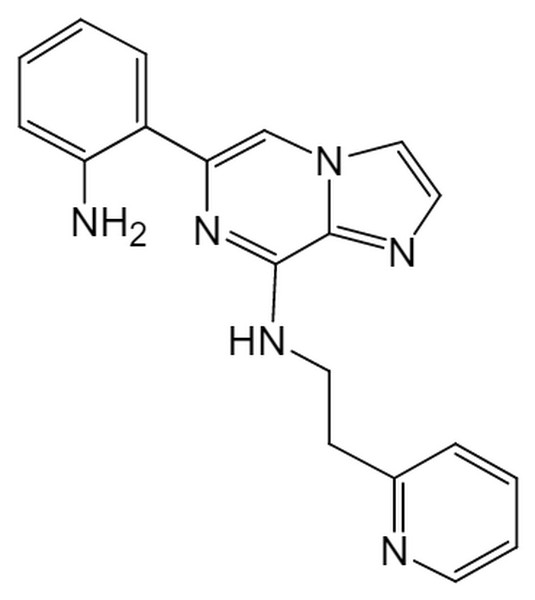
|
| DC67275 |
VU0364739
Featured
|
VU0364739 is a selective inhibitor of phospholipase D2 (PLD2) with an IC50 value of 22 nM. Phospholipase D (PLD) enzymes, including PLD1 and PLD2, are involved in various cellular processes, such as signal transduction, membrane trafficking, and cytoskeletal reorganization. PLD2, in particular, has been implicated in cancer cell proliferation, survival, and metastasis, making it a potential target for anticancer therapies. |
.gif)
|
| DC153158 |
ND-O1 (SM-86 Analog-2)
Featured
|
ND-O1 (SM-86 Analog-2) is a novel ionizable lipid designed to improve the delivery of siRNA via lipid nanoparticles (LNPs) for treating liver fibrosis. It is derived from SM-86 (structurally similar to SM-102, used in COVID-19 mRNA vaccines) but incorporates an ether bond within its hydrophobic tail, a first-of-its-kind modification aimed at enhancing delivery efficiency. In Vitro Efficiency: ND-O1 LNPs (LNP-O1) showed significantly higher siRNA transfection efficiency in activated fibroblasts compared to Lipid 5 LNPs (LNP-M). In Vivo Efficacy: In a CCl4-induced liver fibrosis mouse model, LNP-O1/siHSP47 (loaded with HSP47-targeting siRNA) reduced HSP47 expression by ~84%, threefold more effective than LNP-M. This led to a dramatic reduction in collagen deposition and marked improvement in liver fibrosis. Safety: The ether bond modification did not introduce additional toxicity, maintaining biocompatibility. ND-O1 represents a breakthrough in ionizable lipid design, demonstrating that strategic placement of ether bonds in hydrophobic tails can enhance LNP performance without compromising safety. Its success highlights its potential for clinical translation in RNA-based therapies for liver fibrosis and other hepatic diseases. |

|
| DC13591 |
azido-acetal linker(Acid-degradable liker)
Featured
|
Azido-acetal linker is stable at physiological pH (7.4) but rapidly hydrolyzes in the acidic environment of endosomes useful as a fragment of lipid synthesis. |
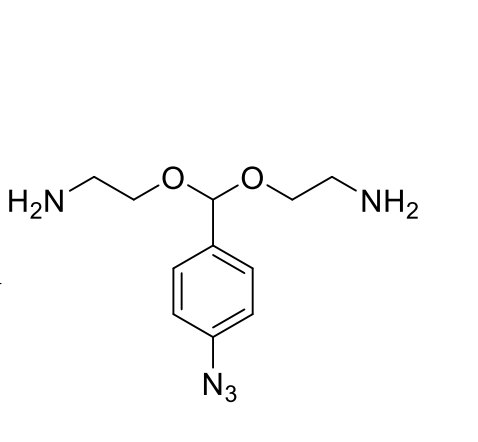
|
| DC67279 |
Rhobo6
Featured
|
Rhobo6 is a cell-impermeable small-molecule fluorophore designed for labeling the extracellular matrix (ECM) in live tissues. It contains a phenylboronic acid group that binds to diols commonly found in ECM glycans, resulting in a significant increase in fluorescence and a red shift in emission spectra. This property allows Rhobo6 to effectively visualize ECM architecture without perturbing native structures, making it suitable for long-term imaging studies. Additionally, Rhobo6's low affinity for monosaccharides enables reversible binding, which prevents photobleaching and allows for dynamic imaging of ECM components. While Rhobo6 does not specifically target individual ECM components, it provides a holistic view of ECM distribution and is particularly useful for studying ECM-related biological phenomena in samples that are not amenable to genetic manipulation or ex vivo culture. |
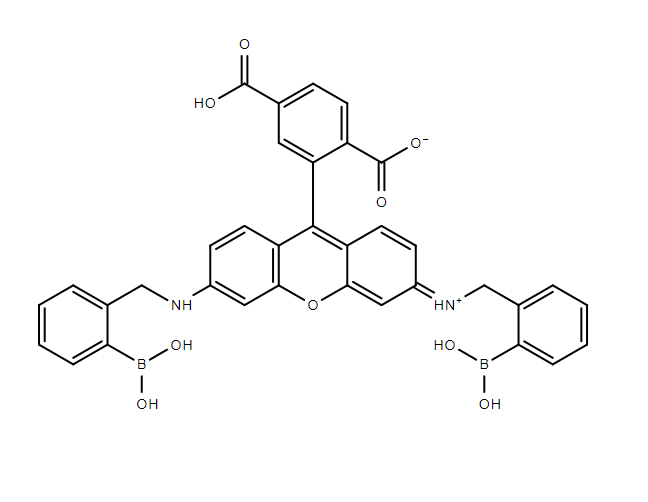
|
| DC60781 |
TRPC6 activator compound 2
Featured
|
TRPC6 activator compound 2 is selective activator of TRPC6 that does not potentiate TRPC3 and mTRPC7. Comp2 is able to cross BBB. |
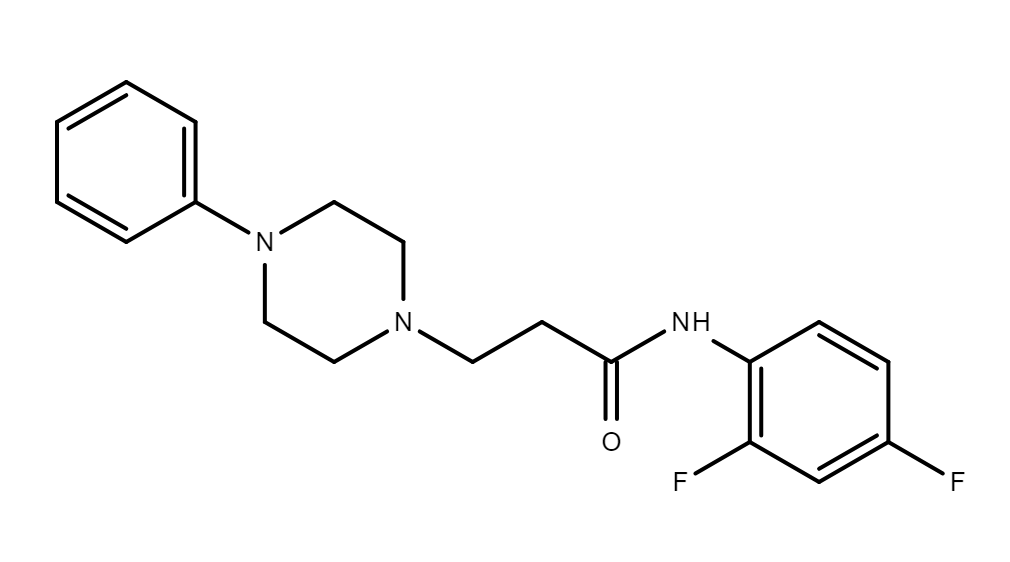
|
| DC60782 |
Lipid A4B4-S3
Featured
|
A4B4-S3 is a novel biodegradable ionizable lipid that has been meticulously designed through modular platforms and optimized specifically for mRNA delivery. It serves as a critical component of lipid nanoparticles (LNPs) and enhances mRNA delivery efficiency by facilitating endosomal escape. The structural design of A4B4-S3 leverages the Passerini reaction, a highly efficient and modular chemical method that enables the rapid generation of diverse lipid libraries. The design focuses on optimizing the methylene units between lipid headgroups and linkages to strengthen hydrogen bonding interactions with mRNA ribophosphate complexes. This enhanced hydrogen bonding allows for more effective release of mRNA from endosomes, thereby boosting delivery efficiency. Concurrently, the structural optimization improves biodegradability, reducing potential long-term toxicity risks.
In experimental studies, A4B4-S3 has demonstrated superior gene editing efficacy in mouse liver compared to SM-102, a clinically prevalent lipid used in Moderna's COVID-19 vaccine. It also shows potential for repeat-dose protein replacement therapies, suggesting enhanced stability and safety for long-term treatment regimens. Technologically, A4B4-S3 not only provides a more efficient LNP formulation but also deepens the understanding of the relationship between structure and delivery efficiency. This offers new directions for the development of future mRNA therapeutics. In summary, A4B4-S3 represents a next-generation delivery carrier achieved through rational design and high-throughput screening strategies. Its performance enhancements and biodegradable properties position it as a promising candidate for gene therapies and vaccine applications. |

|
| DC60783 |
LD4172
Featured
|
LD4172 is a highly potent and specific RIPK1 degrader with Ki of 4.8 nM. LD4172 enhances tumor-infiltrating lymphocyte responses, and sensitizes tumors to anti-PD1 therapy in female C57BL/6J mice. |
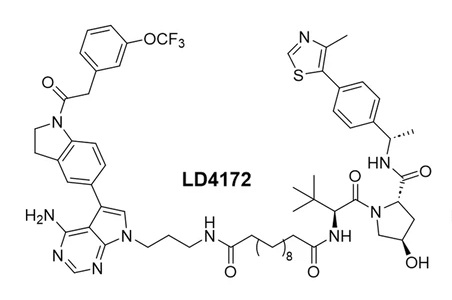
|























.gif)





